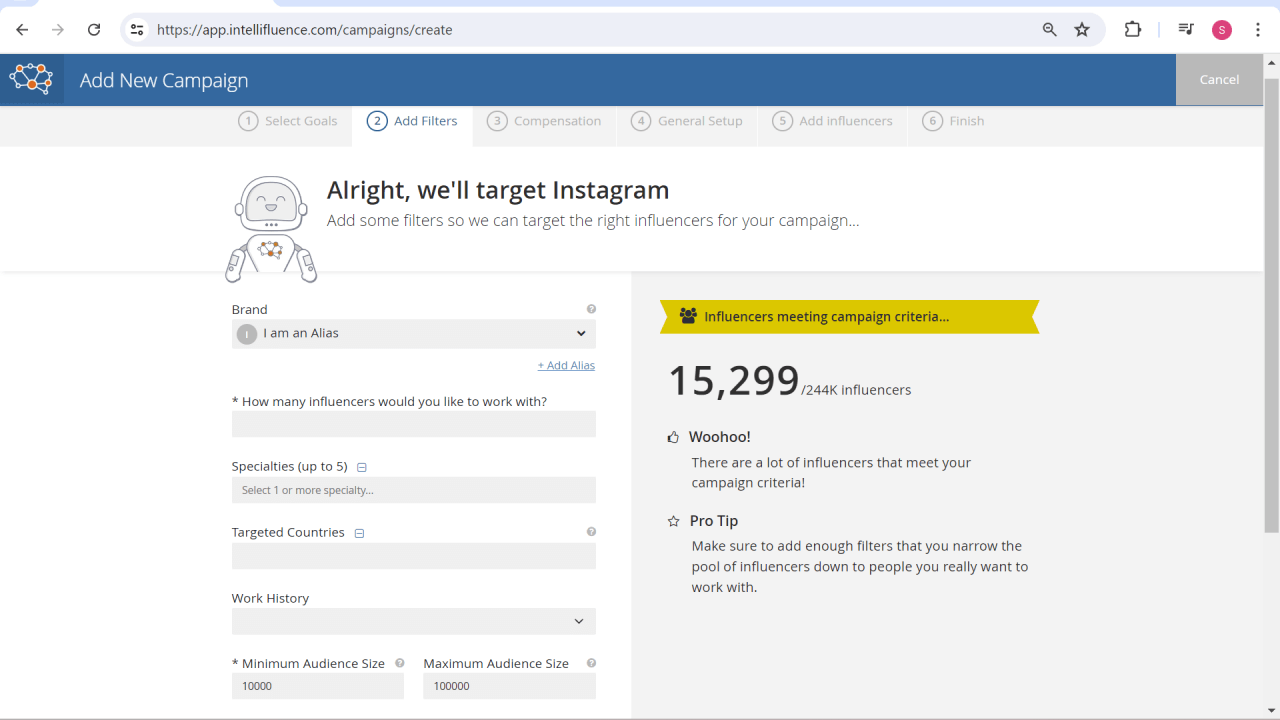Over the last decade, influencers have become a crucial part of brand strategy. As businesses seek to connect with their target audiences in more authentic and impactful ways, influencers offer a valuable avenue for engagement. However, not all influencers are created equal. Two prominent categories in the influencer landscape are nano influencers and micro influencers. Understanding the differences between these two types of influencers goes beyond merely comparing audience sizes; it involves evaluating their distinct benefits and potential drawbacks.
Defining Micro Influencer and Nano Influencer
As a brand, you may be wondering which type of influencer has a larger reach. Is nano bigger than micro or vice versa? To answer this question, let’s define micro influencer and nano influencer. Micro influencers typically have a follower count ranging from 10,000 to 100,000. They have established a significant presence in their niche and are known for their expertise, content quality, and engagement levels. Nano influencers, on the other hand, usually have fewer than 10,000 followers. They might not have a large audience, but their followers are highly engaged and often have a personal connection with them.
Nano Influencers: The Personal Touch
Benefits of Nano Influencers
- High Engagement Rates: Nano influencers often enjoy higher engagement rates compared to their more prominent counterparts. Their smaller follower base means they can interact more personally and frequently with their audience. This engagement translates into higher trust and loyalty, as followers often view nano influencers as friends or peers rather than celebrities.
- Authenticity and Trust: Due to their personal connection with followers, nano influencers are perceived as more authentic. They are less likely to engage in sponsored content that feels out of place, making their endorsements more credible. Brands looking to build genuine connections can benefit significantly from this trust.
- Cost-Effectiveness: Collaborating with nano influencers is generally more cost-effective than working with larger influencers. Brands with limited budgets can still achieve impactful campaigns by partnering with multiple nano influencers. This approach can amplify reach and maintain authenticity.
Drawbacks of Nano Influencers
-
- Limited Reach: The primary drawback of nano influencers is their limited reach. While their engagement rates are high, they do not have the audience size to create widespread brand awareness quickly. This limitation can be a challenge for brands aiming for rapid growth or large-scale exposure.
- Resource Intensive: Managing multiple nano influencers can be resource-intensive. Coordinating campaigns, tracking performance, and maintaining consistent communication with several influencers requires more effort compared to working with a single larger influencer.
If your brand is concerned about not having enough resources to collaborate with nano influencers, Intellifluence has the perfect solution for you. Intellifluence offers managed services, which means that an Intellifluence administrator will assist with setting up your campaign, managing the campaign, vetting influencers, and maintaining constant communication with the influencers and with you as much as you require.

Featured Influencer: Michael Adamcyzk
The creator and host of Captain Collins, a popular gaming channel on YouTube and Twitch. With a background in game development and a passion for gaming, Michael shares his expertise and insights with his audience of thousands of loyal fans. He provides in-depth reviews of the latest games, showcases gameplay footage, and offers tips and tricks for players to improve their skills.
Micro Influencers: The Best of Both Worlds
Benefits of Micro Influencers
- Balanced Reach and Engagement: Micro influencers offer a balance between reach and engagement. With follower counts between 10,000 to 100,000, they have a significant audience while still maintaining relatively high engagement rates. This combination allows brands to reach a broader audience without sacrificing too much in terms of engagement.
- Niche Authority: Micro influencers often establish themselves as authorities within their specific niches. Their content is specialized, and their followers look to them for expert advice and recommendations. Brands in niche markets can leverage this authority to reach highly targeted audiences effectively.
- Professionalism: Compared to nano influencers, micro influencers are more likely to have experience with brand collaborations. They often have a more professional approach to content creation and campaign management, ensuring smoother execution and higher-quality deliverables.
Drawbacks of Micro Influencers
- Higher Costs: Working with micro influencers can be more expensive than collaborating with nano influencers. Their larger audience and established authority come at a higher price point, which might not be feasible for smaller brands or those with limited marketing budgets.
- Potential for Reduced Authenticity: As micro influencers grow, there is a risk that their content may start to feel more commercialized. The increase in sponsored posts can lead to a perceived loss of authenticity, which might reduce the trust and engagement of their audience over time.
Nano vs. Micro Influencers: Choosing the Right Fit
When considering nano vs micro influencers, it’s essential to evaluate the specific goals and needs of the brand. After you have determined precise goals and needs for your brand, it’s simple to find suitable influencers to collaborate with using Intellifluence. Once you create a campaign, our system will only show your offer to influencers that meet the criteria you set during the campaign setup. This may include the type of social media channel the influencer uses, the type of compensation offered (cash, free product, or both), the size of the influencer’s audience, and other preferences. This means that your brand won’t be overwhelmed with applications from influencers who don’t meet your criteria and only receive applications from ones who do.
For example, if a brand wants to collaborate only with micro influencers, they should input an audience size of 10,000 to 100,000 when creating their campaign on Intellifluence. At Intellifluiecne we define micro influencer as someone whose audience size is between 10,000 and 100,00. By inputting the criteria of an audience size of 10,000 to 100,000, the brand will only receive offers from influencers who are considered micro influencers

Here are some scenarios where one type of influencer might be more beneficial than the other:
Scenario 1: Building Brand Trust and Authenticity
For a new skincare brand looking to build trust and authenticity, nano influencers can be an excellent choice. Their close-knit relationships with their followers and high engagement rates mean that their recommendations are likely to be perceived as genuine. A campaign involving multiple nano influencers who share personal stories and experiences with the brand’s products can create a strong foundation of trust.
Scenario 2: Reaching a Niche Audience
A company specializing in vegan and eco-friendly products may benefit more from micro influencers who are recognized as authorities in the sustainable living niche. These influencers have a significant following of individuals already interested in eco-friendly lifestyles, making them a powerful voice for the brand. Their content can provide in-depth reviews and tutorials, driving home the brand’s values and benefits to a targeted audience.
Scenario 3: Maximizing Budget Efficiency
A startup with a limited marketing budget might find nano influencers more appealing. Collaborating with several nano influencers can extend the brand’s reach across different segments without breaking the bank. This approach also allows the brand to experiment with various messaging and content styles to see what resonates best with different audiences.
Scenario 4: Launching a New Product Line
For an established fashion brand launching a new product line, partnering with micro influencers can be advantageous. These influencers can provide a wider reach while still maintaining a level of engagement that ensures their endorsements are impactful. Their professional content creation skills can also help in presenting the new product line in a polished and appealing manner.
The Hybrid Approach: Combining Nano and Micro Influencers
In many cases, the most effective strategy might be a hybrid approach that leverages both nano and micro influencers. By combining the authenticity and high engagement of nano influencers with the broader reach and niche authority of micro influencers, brands can maximize their impact.
For example, a tech company launching a new gadget could use nano influencers to create buzz within smaller, tight-knit communities, while micro influencers can help reach a broader tech-savvy audience with detailed reviews and demonstrations. This multi-tiered strategy ensures comprehensive coverage and leverages the strengths of both types of influencers.
Tailoring the Strategy to Your Needs
Understanding the differences between nano and micro influencers goes beyond simply comparing audience sizes. Nano influencers offer high engagement, authenticity, and cost-effectiveness, making them ideal for building trust and reaching specific communities. Micro influencers provide a balance of reach and engagement, niche authority, and a more professional approach to collaborations.
Brands need to assess their specific goals, target audiences, and budget constraints to determine which type of influencer – or combination of both – will best meet their needs. By carefully selecting the right influencers and tailoring their strategies accordingly, brands can effectively harness the power of influencer marketing to achieve their objectives.
Whether the goal is to build brand trust, reach a niche audience, maximize budget efficiency, or launch a new product line, understanding the unique benefits and potential drawbacks of nano and micro influencers is crucial. This nuanced approach allows brands to make informed decisions and drive successful marketing campaigns that resonate with their target audiences.

SallyBot is committed to helping users get the most out of Intellifluence. By helping brands create campaigns, providing unparalleled customer service and offering useful advice, nothing makes SallyBot happier than hearing she is liked… Really, really liked.






